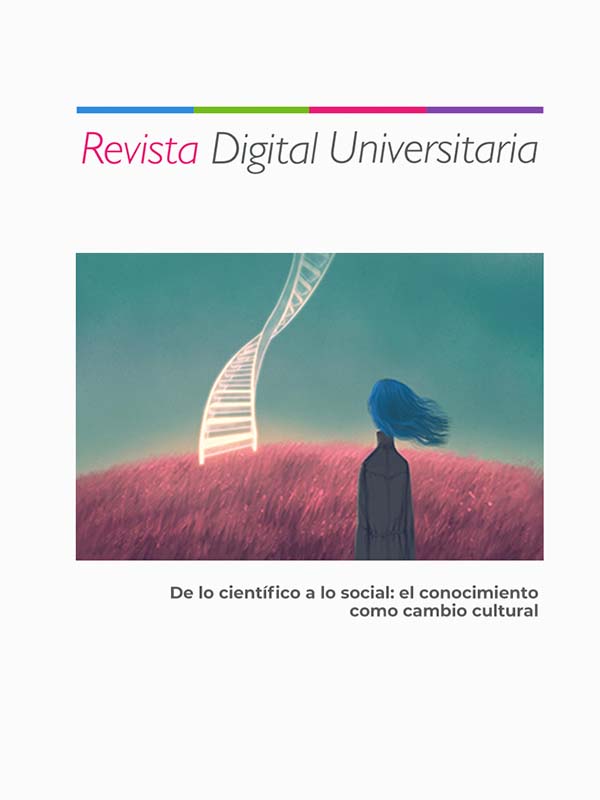The duality of the red-eared slider: charismatic pet and invasive species
DOI:
https://doi.org/10.22201/ceide.16076079e.2025.26.1.9Keywords:
reptiles, pets, alien species, aquatic habitatsAbstract
Turtles are charismatic organisms and are very popular as pets. The most popular species worldwide is the red-eared slider (Trachemys scripta elegans), which is considered among the 100 most invasive species worldwide. The lack of information has led to their release into natural habitats, becoming invasive alien species. The presence of the red-eared slider in México is alarming since it is unknown if there are already established viable populations in natural freshwater habitats. Because Mexico has a high diversity of turtles, it is important to evaluate the current situation of this invasive alien species and its influence on the diversity of turtles in the country.
References
Aresco, M. J. (2010). Competitive interactions of two species of freshwater turtles, a generalist omnivore and an herbivore, under low resource conditions. Herpetologica, 66(3), 259-268. https://doi.org/10.1655/09-004.1
Arthington A. H., Naiman R. J., McClain M. E., Nilsson C. (2010). Preserving the biodiversity and ecological services of rivers: new challenges and research opportunities. Freshwater Biology. 55(1), 1-16. https://doi.org/10.1111/j.1365-2427.2009.02340.x
Becerra, E., Rico Y., Borja, J. M., Rodríguez-López, B., y Gutierrez-Martinez, A. (2024). First record of the invasive Red-eared slider (Trachemys scripta elegans) in the Nazas River, Durango Mexico. Herpetology Notes, 17, 57-60. https://www.biotaxa.org/hn/issue/view/10486
Cadi, A., y Joly, P. (2003). Competition for basking places between the endangered European pond turtle (Emys orbicularis galloitalica) and the introduced redeared slider (Trachemys scripta elegans). Canadian Journal of Zoology, 81(8),1392-1398. https://doi.org/10.1139/z03-108
Cadi, A., y Joly, P. (2004) Impact of the introduction of the red-eared slider (Trachemys scripta elegans) on survival rates of the European pond turtle (Emys orbicularis). Biodiversity and Conservation, 13, 2511-2518. https://doi.org/10.1023/B:BIOC.0000048451.07820.9c
Campbell, L. (2002). Contemporary Culture, Use, and Conservation of Sea Turtles. En P. Lutz., J. Musick. y J. Wyneken (Eds.), The Biology of Sea Turtles, Volume ii (pp. 301-331). crc Press.
conabio. (2023, 27 de mayo). Especies exóticas invasoras. Biodiversidad Mexicana. https://tinyurl.com/bdcwbxxt
Dudgeon, D., Arthington, A., Gessner, M., Kawabata, Z., Knowler, D., Leveque, C., Naiman, R., Prieur-Richard, A., Soto, D., Stiassny, M., Sullivan C. (2006). Freshwater biodiversity: importance, threats, status and conservation challenges. Biological Reviews, 81(2), 163-182. https://doi.org/10.1017/S1464793105006950
Easter, T., y Carter, N. (2024). Analysis of 20 years of turtle exports from the us reveals mixed effects of cites and a need for better monitoring. Conservation Science and Practice, 6(4), e13092. https://doi.org/10.1111/csp2.13092
Global Invasive Species Database (gisd). (2023, 24 de abril). Species profile: Trachemys scripta elegans. https://tinyurl.com/452773zy
Guevara Chumacero, M., Pichardo Fragoso, A., y Martínez Cornelio, Monserrat Martínez. (2017). La tortuga en Tabasco: comida, identidad y representación. Estudios de Cultura Maya, 49, 97-122. https://doi.org/10.19130/iifl.ecm.2017.49.758
Kopf, R. K., Finlayson, C. M., Humphries, P., Sims, N. C., y Hladyz, S. (2015). Anthropocene baselines: assessing change and managing biodiversity in human dominated aquatic ecosystems. BioScience, 65(8), 798-811. https://doi.org/10.1093/biosci/biv092
Lamm, S. H., Taylor, A. Jr., Gangarosa, E. J., Anderson, H. W., Young. W., Clark, M. H., y Bruce, A. R. (1972). Turtle-associated salmonellosis. I. An estimation of the magnitude of the problem in the U.S., 1970–71. American Journal of Epidemiology, 95(6), 511-517. https://doi.org/10.1093/oxfordjournals.aje.a121418
Lovich, J., y Gibbons, W. (2021). Turtles of the world, a guide to every family. Princeton University Press.
Legler, J., y Vogt, R. (2013). Turtles of Mexico: Land and Freshwater forms. University of California Press.
Oberdorff, T. (2022). Time for decisive actions to protect freshwater ecosystems from global changes. Knowledge & Management of Aquatic Ecosystems, 423. https://doi.org/10.1051/kmae/2022017
Pearson, S. H., Avery, H. W., y Spotila, J. R. (2015). Juvenile invasive red-eared slider turtles negatively impact the growth of native turtles: Implications for global freshwater turtle populations. Biological Conservation, 186, 115-121. https://doi.org/10.1016/j.biocon.2015.03.001
Petco. (s.f.). Red-Eared Slider Care Sheet. https://tinyurl.com/3bh8nskb
Strayer D. L., y Dudgeon, D. (2010). Freshwater biodiversity conservation: recent progress and future challenges. Journal of the North American Benthological Society, 29(1), 344-358. https://doi.org/10.1899/08-171.1
Williams, T. (1999). The terrible turtle trade. Audubon 44, 101(2),44-51. New York Turtle and Tortoise Society. https://nytts.org/asia/twilliams.htm
Published
Issue
Section
License
Copyright (c) 2025 Revista Digital Universitaria

This work is licensed under a Creative Commons Attribution-NonCommercial-ShareAlike 4.0 International License.

Revista Digital Universitaria es editada por la Universidad Nacional Autónoma de México se distribuye bajo una Licencia Creative Commons Atribución-NoComercial 4.0 Internacional. Basada en una obra en http://revista.unam.mx/.










